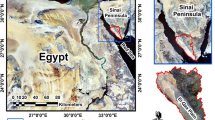Abstract
The purpose of this study is to develop earthquake induced landslide hazard zoning maps for the Island of Hawai`i using GIS tools. These potential hazard maps can be utilized to prioritize further investigation and to highlight where further recommendations of mitigation methodologies may be appropriate. Landslide analysis is a complex analysis, involving a multitude of factors and it needs to be studied systematically in order to locate the areas prone to landslides. Use of computer-based tools, namely Geographical Information Systems (GIS), has been found to be useful in hazard mapping schemes. Methodology for the current research consists of Qualitative Weight Analysis based on various causative factors and Quantitative Analysis (Slope failure analysis) based on slope stability models. In qualitative weight analysis, different causative factors are grouped according to their relative importance. Depending on the threat posed by each causative factor, the Landslide Susceptibility Index weights were assigned. The problem of missing data is common in any analysis and has certainly been an issue for this study with the lack of data for Hawai`i and Hawaiian soils/rock. One approach to deal with missing values is to delete the incomplete cases from the data set. This approach may disregard valuable information, especially in small samples. An alternative approach is to reconstruct the missing values using the information in the data set. In this analysis, missing data values of the landslide causative parameters, hardness and depth of the soil were obtained using an Artificial Neural Network. In quantitative analysis, the general approach to the landslide zoning method is based on slope stability analyses to determine the Factor of Safety (FS) of the individual slopes based on profiles and specific geotechnical information. Factor of safety is obtained by dividing the forces resisting movement by the forces driving movement. Earthquake induced Landslide hazard zoning maps with ten zones viz., high (10) to low (1), have been developed from the data.
Access this chapter
Tax calculation will be finalised at checkout
Purchases are for personal use only
Similar content being viewed by others
References
Abudu S, Bawazir AS, King JP (2010) Infilling missing daily evapotranspiration data using neural networks. J Irrigation Drainage Eng 136(5):317–325
Atkinson G (2010) Ground-motion prediction equations for Hawai`i from a referenced empirical approach. Bull Seismol Soc Am 100(2):751–761
Christian JT, Urzua A (1998) Probabilistic evolution of earthquake induced slope failure. J Geotech Geoenviron Eng 124(11):1140–1143
Goh ATC, Wong KS, Broms BB (1995) Estimation of lateral wall movements in braced excavations using neural networks. Can Geotech J 32:1059–1064
Gupta A, Lam MS (1996) Estimating missing values using neural networks. J Oper Res Soc 47:229–238
Juang CH, Elton DJ (1997) Predicting collapse potential of soils with neural networks. Transp Res Rec 1582:22–28
Jang J-SR (1993) ANFIS: adaptive-Network-based Fuzzy Inference Systems. IEEE Trans Sys Man Cybern 23:665–685
Khazai B, Sitar N (2000) Assessment of seismic slope stability using GIS modeling. Geogr Inf Sci 6:2
Klein FW, Frankel AD, Mueller CS, Wesson RL, Okubo PG (2001) Seismic hazard in Hawai`i: high rate of large earthquakes and probabilistic ground-motion maps. Bull Seismol Soc Am 91:479–498
Kuligowski RJ, Barros AP (1998) Using artificial neural networks to estimate missing rainfall data. J Am Water Res Assoc 34(6):1437–1447
Kung TC, Hsiao CL, Schuster M, Juang CH (2007) A neural network approach to estimating excavation-induced wall deflection in soft clays. Comput Geotech 34:385–396
Lee S, Ryu J, Min K, Won J (2003) Landslide susceptibility analysis using G.I.S. and artificial neural network. Earth Surf Proc Land 28:1361–1376
Luzi L, Pergalani F, Terlien MTJ (2000) Slope vulnerability to earthquakes at subregional scale, using probabilistic techniques and GIS. Eng Geol 58:313–336
Mahdavifar M, Jafari MK, Zolfaghari MR (2008) GIS-based real time prediction of Arias intensity and earthquake-induced landslide hazards in Alborz and Central Iran. In: Proceedings of the 10th international symposium on landslides and engineered slopes, 30 June–4 July 2008, Xi’an, China
Refice A, Capolongo D (2002) Probabilistic modeling of uncertainties in earthquake induced landslide hazard assessment. Comput Geosci 28:735–748
Stark TD, Choi H, McCone S (2005) Drained shear strength parameters for analysis of landslides. J Geotech Geoenviron Eng 131(5):575–588
Thomas AE (2005) Application of GIS model to map liquefaction susceptibility on Maui, M.S. Thesis, University of Hawai`i
Tiwari B, Marui H (2005) A new method for the correlation of residual shear strength of the soil with mineralogical Composition. J Geotech Geoenviron Eng 131(9):1139–1150
Van Westen CJ (2000) The modeling of landslide using GIS. Surv Geophys 21:241–255 (Kluwer Academic Publishers)
Author information
Authors and Affiliations
Corresponding author
Editor information
Editors and Affiliations
Rights and permissions
Copyright information
© 2013 Springer-Verlag Berlin Heidelberg
About this paper
Cite this paper
Nicholson, P., Namekar, S. (2013). Earthquake-Induced Landslide Hazard Zoning of the Island of Hawai`i. In: Ugai, K., Yagi, H., Wakai, A. (eds) Earthquake-Induced Landslides. Springer, Berlin, Heidelberg. https://doi.org/10.1007/978-3-642-32238-9_79
Download citation
DOI: https://doi.org/10.1007/978-3-642-32238-9_79
Published:
Publisher Name: Springer, Berlin, Heidelberg
Print ISBN: 978-3-642-32237-2
Online ISBN: 978-3-642-32238-9
eBook Packages: Earth and Environmental ScienceEarth and Environmental Science (R0)




